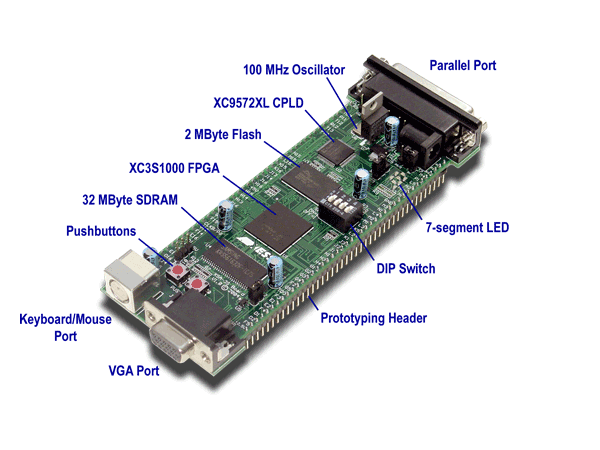XSA-3S1000 Prototyping Board |
XSA-3S1000
|
The XSA-3S1000 Board keeps the same form-factor as our popular XSA-100 Board while increasing the logic density to 1,000,000 gates with a Spartan-3 XC3S1000 FPGA. The FPGA is combined with a 32 MByte synchronous DRAM and 2 MByte Flash to give you the resources for building a complete, soft-core RISC microcontroller system! Or anything else you might think of... Up to four unique bitstreams can be stored in the Flash and you can set the switches to select which bitstream configures the FPGA when power is applied. Or you can download directly to the FPGA through the parallel port with the XSTOOLs utilities we provide. The interface CPLD on the XSA-3S1000 also supports downloading with XILINX iMPACT and circuit test/debug with ChipScope using our simple downloading cable. No more expensive XILINX cables! In addition to the larger FPGA, SDRAM and Flash chips, you also get a VGA port that produces vivid graphics in 512 colors. And the prototyping header gives you 65 general-purpose I/O pins that are completely free for building interfaces to external devices. And you can access a variety of interfaces by inserting the XSA-3S1000 into one of our XStend 4.0 Boards. Think it will be a big switch to move to the XSA-3S1000? Well, we provide all the software utilities for programming the FPGA, and downloading and uploading the RAM and Flash. And we make all the source code available for you to play with! How about design examples? We have parameterized modules for interfacing to the PS/2 keyboard port, displaying images through the VGA port, and reading/writing to the synchronous DRAM as if it were a simple static RAM. |
 |